Freshwater Fishing Setup
Instructions For Rigging A Fishing Rod
There are many ways to get your gear set up for freshwater fishing. It's mostly determined by what species of fish you will target, and the techniques you will want to deploy.
For this demonstration, I'll be covering the most basic fishing set up that many of us have been taught and learned how to to use growing up as young fishermen. This simple setup may be common and basic, but is very effective for catching fish.
Anglers of all skill levels have been rigging up their fishing rods this way for many years, because it has proven to be one of the most successful ways for catching fish.
I've even walked into bait and tackle shops pretending to be a total newbie to the sport of fishing, asking the guys behind the counter how to rig up a fishing rod, and they proceeded to show me the same step by step instructions that I'm about to show you...
Setting Up For Freshwater Fishing
First of all, here's a checklist of the things that you will need:
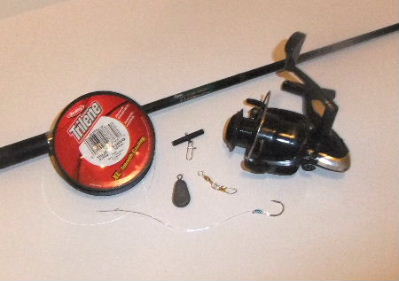
- Rod
- Reel
- Line
- Swivel
- Hooks
- Weights
- Sliders
- Bait
These are the basics, say for catching fish off of the bottom, such as channel catfish, carp, or the occasional bass or panfish.
You can often find rod and reel combinations, sometimes already pre-spooled with fishing line. This can be great because everything is already matched up just right for you and nearly ready to go fishing.
I would suggest a medium action fishing rod. About 6 ½ feet should be great. Match that with a spinning reel, and let's say about 10 pound test monofilament fishing line. The rod and reel both should state that they will accommodate 10 pound test line.
A slider is optional, but I suggest it because it can make life a little easier for you out on the water. I'll explain in just a moment.
You can tie your own leaders to your hooks, or get yourself
the hooks that are already pre-snelled with a leader. In this
demonstration, I'm using a size 3/0 octopus hook.
Setting Up A Fishing Rod
1)
Attach your spinning reel to your rod. That should be
straight forward and very simple. Moving on...
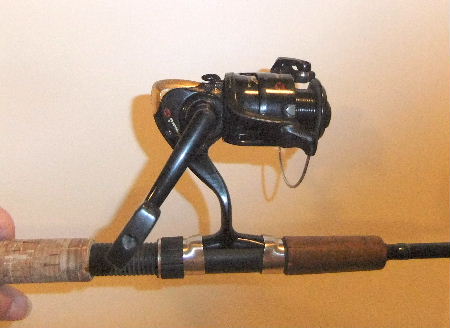
2) Run the fishing line through the guides holes of the rod, starting at the tip and working down.
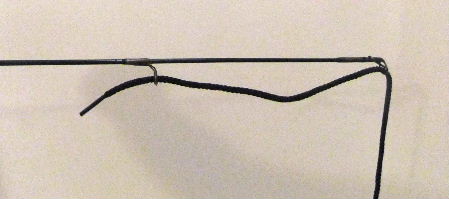
The fishing line is a little difficult to see in the pictures, so I'm using a shoe lace to demonstrate here.
3) Open the bail of the spool on the spinning reel and tie it on using an arbor knot. The arbor knot is about the best choice for tying line to the spool.
4) Close the bail and begin cranking the fishing line onto the spool.
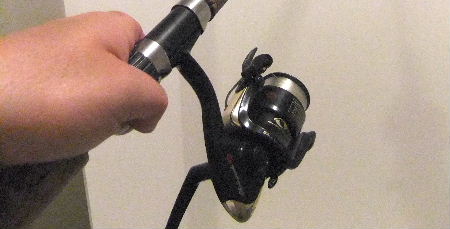
Fill the spool with enough line until there is about 1/8 of an inch gap between the line and the outer edge of the spool. Any more than that and you may end up with a disaster of a bird nest, ball of knotted up line once you begin casting and retrieving.
5) Cut the line a few feet past the rod tip.
Add the slider on the line.
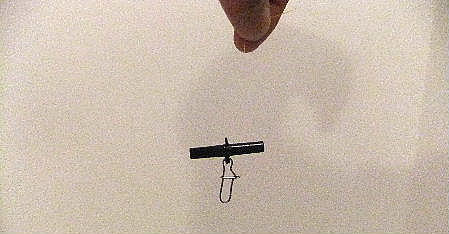
Then tie on a snap swivel.

A really easy and strong knot to use is the palomar knot. (More advanced knots can be found in our fishing knots section.)
6) Connect your leader and hook to the other end of the swivel. If you're making your own leader, a good length should be about 18 inches. Then you can use a stand alone swivel without a snap clasp.
7) Add a sinker to the slider. The weight of the sinker should be determined by how fast the water's current is moving. You want to use the lightest weight possible, just enough to get the bait down and held in place without the current moving it.
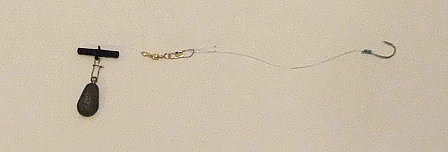
8) Bait up the hook and you're ready to start fishing.
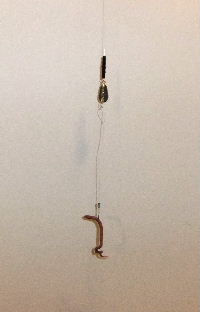
Additional Rigging Tips:
If you don't have a slider or just don't want to use one, you can instead run the sinker right onto the line by itself. The downfall is that some style of sinkers will create abrasions and fray the line, causing it to become weak, and possibly break when fighting fish.
The purpose of using a slider is so that fish don't feel the weight. Fish will pick up the bait and run with it. So the line will pass through the slider as the fish takes the bait.
When you're ready, you can find more advanced fishing
techniques, tactics, tips and other great information for the different
types of fish that you want to catch by checking out the variety of
species listed in the navigation bar that you see there in the left
hand column.

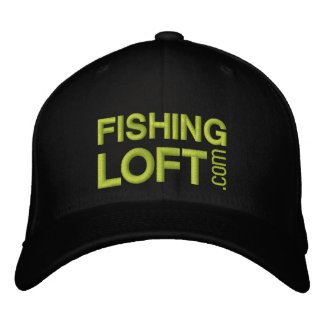




Facebook Comments
Leave a comment, question or tip in the box below.